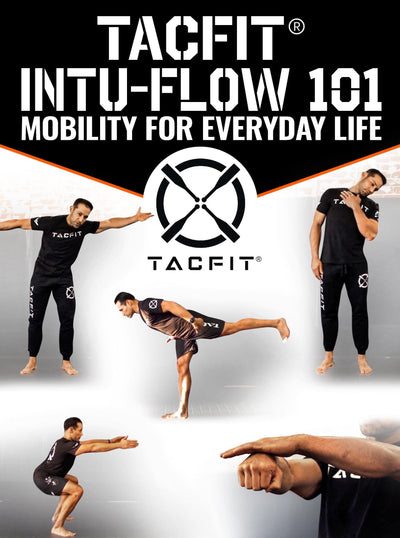Kettlebell Front Squat
In the ever-evolving landscape of fitness, certain exercises stand the test of time due to their unparalleled effectiveness in delivering holistic strength and stability gains. One such exercise that has garnered attention in recent years is the kettlebell front squat. This compound movement not only serves as a potent lower body exercise but also engages the core and upper body, making it a quintessential addition to any well-rounded fitness regimen. In this comprehensive guide, we delve into the intricacies of the kettlebell front squat and its symbiotic relationship with complementary exercises that promise to take your fitness journey to new heights.
What this article covers:
- The Kettlebell Front Squat: A Deeper Dive
- Performing the Kettlebell Front Squat: Technique Unveiled
- A Symphony of Complementary Movements
- Embracing the Journey
The Kettlebell Front Squat: A Deeper Dive
Positioned at the intersection of strength, mobility, and coordination, the kettlebell front squat exemplifies the fusion of functional movement and targeted muscle engagement. The setup is crucial: stand tall with feet shoulder-width apart, toes slightly angled outward. Grasp the kettlebell firmly by its horns, holding it close to your chest. This unique grip engages the muscles of the upper body, setting the stage for a comprehensive workout.
As you descend into the squat, the kettlebell remains nestled against your chest, promoting a more upright torso position. The controlled descent not only targets the quadriceps and hamstrings but also the glutes, fostering balanced lower body development. While your legs work in concert, your core muscles are activated to maintain stability and an upright posture, enhancing functional strength and reducing the risk of injury.
Performing the Kettlebell Front Squat: Technique Unveiled
At the heart of any effective fitness routine lies the mastery of proper form, and the kettlebell front squat is no exception. To execute this foundational movement with precision, begin by positioning yourself for success. Stand proudly with your feet shoulder-width apart, allowing a slight outward turn of the toes to encourage natural hip mobility. As you clasp the kettlebell by its horns, bring it close to your chest, fostering a firm grip and activating your upper body muscles.
As you commence the squat, initiate the movement by gently pushing your hips back, as if sitting into an invisible chair. Simultaneously, bend your knees while keeping your chest lifted and your back straight. This seamless interplay between the hip hinge and knee flexion ensures a smooth and controlled descent. Lower yourself with grace until your thighs are parallel to the ground, or as far as your flexibility allows, maintaining a steady breath throughout.
To ascend, exert force through your heels and drive upward, extending your hips and knees in sync. As you rise, keep your core engaged and maintain an upright posture, avoiding any rounding of the back. With each repetition, focus on the mind-muscle connection, channeling your energy into the muscles of your lower body and core. This harmony of movement and intention not only amplifies your results but also minimizes the risk of injury.
A Symphony of Complementary Movements
To amplify the benefits of the kettlebell front squat, integrating complementary exercises into your routine can yield remarkable results:
- Kettlebell Swing Squat: Merge the power of the kettlebell swing with the stability of a squat. Transition seamlessly from the swing's apex into a squat, challenging your explosiveness and lower body control simultaneously.
- Kettlebell Split Squat: Elevate your leg training with the split squat. Holding a kettlebell in each hand, step back into a lunge, creating a dynamic stretch through the hips. This exercise hones in on unilateral strength while fostering balance and flexibility.
- Overhead Squat Kettlebell: Elevate your training by holding a kettlebell overhead during the squat. This demands exceptional shoulder stability and mobility, transforming a lower body exercise into a full-body endeavor that tests your limits.
- Double Kettlebell Squat: Elevate the intensity by doubling the kettlebells. With a kettlebell in each hand, positioned at shoulder height or in the rack position, the challenge escalates, forcing your core and legs to work in symphony to handle the increased load.
- Pistol Squat on Kettlebell: Push the boundaries of balance and control with the pistol squat. Place a kettlebell under your heel, extending your opposite leg in front. This exercise is a masterclass in unilateral strength and mobility, demanding unwavering focus and precision.
Embracing the Journey
Incorporating the kettlebell front squat and its complementary exercises into your routine is a pathway to unlocking unparalleled strength and stability. As you embark on this fitness odyssey, remember that form and progression are your allies. Commence with weights that allow for pristine form and gradually increase the load as your body adapts and grows stronger.
In the tapestry of fitness, the kettlebell front squat stands as a cornerstone, and its complementary exercises add hues of variety and depth. From novice to expert, these movements are a testament to the versatility of kettlebell training. Cherish the process, listen to your body, and revel in the transformation that emerges as you embark on this holistic journey toward vitality and strength.
Did you find the blog helpful? If so, consider checking out other guides:
- Kettlebell Squat Clean
- Kettlebell Squats Muscles Worked
- Kettlebell Bulgarian Split Squat
- Kettlebell Squats
- Sumo Squats with Kettlebells
- Kettlebell Goblet Squat
- Kettlebell Bicep Workout
- Kettlebell Curls
- Kettlebell Hammer Curl
- Kettlebell Crush Curl
- Kettlebell Towel Curl
- Kettlebell Strict Press
- Military Press Kettlebell
- Upside Down Kettlebell Press
- Seated Kettlebell Press





